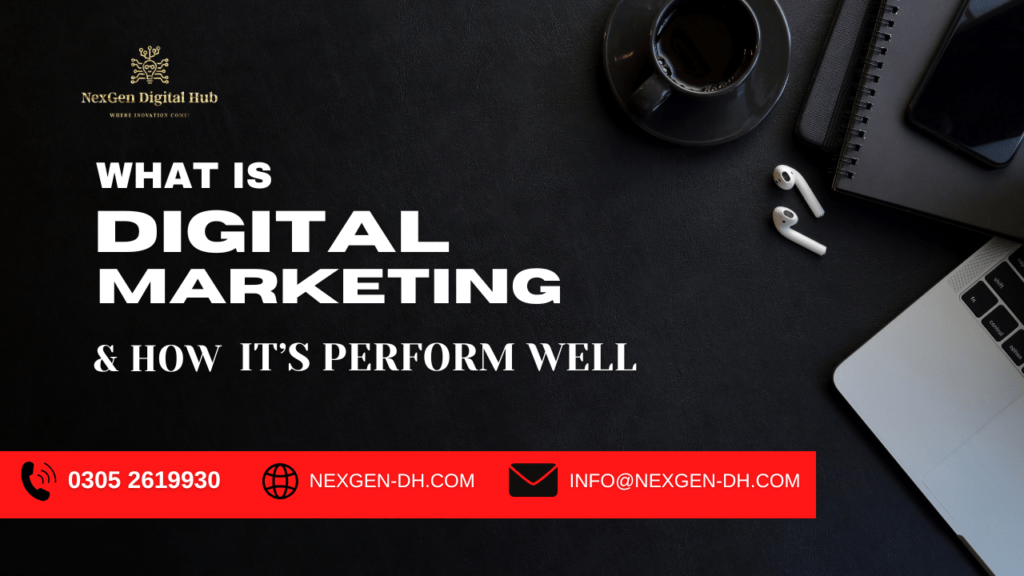+92-305 2619930
How to Effectively Audit Your Digital Marketing Strategy

In the fast-paced world of digital marketing, what worked yesterday may not work today. Without a clear view of your performance, you risk wasting budget and missing crucial opportunities. This is where a comprehensive digital marketing audit becomes your most powerful tool. An audit is not a critique of failure; it’s a strategic health check designed to evaluate the effectiveness of your current efforts across all channels.
A thorough audit systematically examines everything from your website analytics and SEO foundations to your social media engagement, paid advertising ROI, and email marketing conversion rates. It moves beyond vanity metrics to uncover what’s truly driving results and, more importantly, what’s holding you back. By conducting a regular audit, you transform raw data into a clear-action plan, identifying gaps, highlighting strengths, and aligning your strategy with clear business objectives. This proactive approach ensures every dollar and every effort contributes to sustainable growth, making the audit an indispensable ritual for any data-driven marketer.
How to Audit a Website Manually
A manual website audit is a hands-on, critical analysis of your site’s health, focusing on elements automated tools can miss. It begins with a thorough content review. Scrutinize every page for accuracy, relevance, and alignment with user intent. Check for outdated information, broken promises, and thin content that offers little value. This qualitative assessment ensures your messaging remains powerful and effective.
Next, conduct a meticulous user experience (UX) check. Navigate your site like a first-time visitor. Is the menu intuitive? Is key information easy to find? Test all forms, buttons, and calls-to-action to ensure they function correctly. Analyze page loading speeds and assess how the site renders on different devices, like your mobile phone. Look for visual inconsistencies, typos, and poor formatting that hurt credibility.
Finally, perform a technical crawl. Manually check for broken internal and external links. Review meta titles and descriptions for clarity and keyword relevance. Examine URL structures for simplicity and confirm that essential pages like Privacy Policy are accessible. This manual deep dive uncovers critical flaws, providing the foundational insights needed to enhance performance, trust, and conversion.
How to Audit a Website with AI Tools
Auditing your website with AI tools transforms a tedious manual process into a efficient, data-powered analysis. These platforms use machine learning to crawl your site, identify critical issues, and provide actionable insights far beyond basic metrics.
Begin by using an AI-powered SEO suite like Semrush, Ahrefs, or MarketMuse. These tools conduct a deep technical crawl, automatically flagging problems like broken links, duplicate content, slow-loading pages, and indexing errors. They analyze your content against top-ranking competitors, suggesting semantic keywords and topic clusters to improve relevance and authority.
Furthermore, AI excels at content gap analysis. It can compare your site to competitors and pinpoint exactly which subjects you’re missing, allowing you to strategically fill those voids. Tools like Writer or Grammarly use AI to audit content quality, ensuring tone consistency, readability, and grammatical accuracy across every page.
By leveraging AI, you move from simple diagnostics to predictive recommendations, creating a robust, optimized website poised for growth.
Core Web Vitals Check of Website
A Core Web Vitals check is an essential audit of your website’s user experience, measuring loading speed, interactivity, and visual stability. These metrics, defined by Google, are crucial for both user satisfaction and search engine rankings.
To perform a check, start with Google’s own tools. PageSpeed Insights provides immediate scores for Largest Contentful Paint (LCP), which should load within 2.5 seconds. It also analyzes First Input Delay (FID), or Interaction to Next Paint (INP), targeting a responsiveness of under 100 milliseconds, and Cumulative Layout Shift (CLS), which requires a score below 0.1 to minimize annoying layout shifts.
For a comprehensive analysis, use Google Search Console. Its Core Web Vitals report aggregates real-world user data (field data) from Chrome browsers, pinpointing specific URLs across your site that need improvement. This combination of lab (PageSpeed) and field (Search Console) data provides a complete picture for prioritizing fixes and enhancing overall site performance.
Ending Thoughts
Shaikh Wasay

